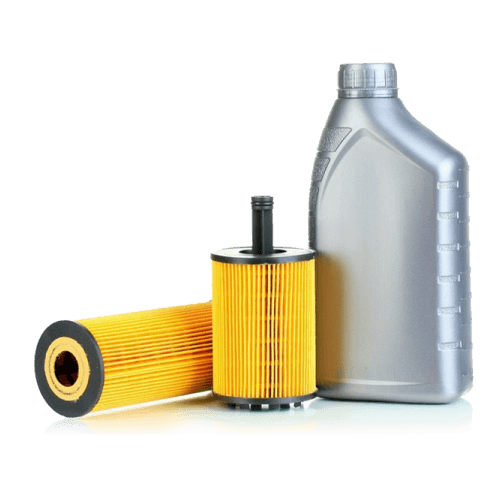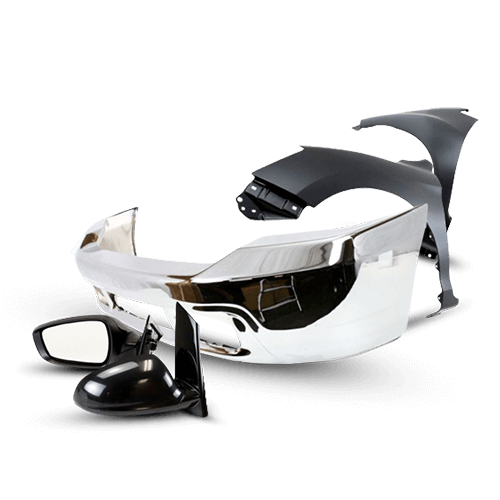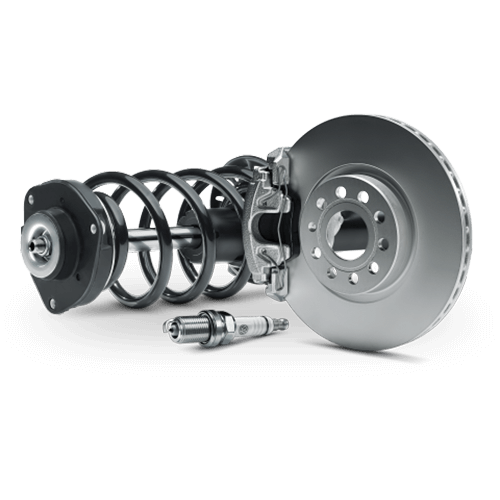
Do I have halogen or HID Xenon Headlight Bulbs?
The most obvious way to find out the type of headlight bulbs, specifically the low beams, is to check the vehicle owner's manual or call the dealership. However, the dealership may not give you the size or type of headlight bulbs, but simply the MPN (Manufacturer Part Number) You can also pull out the bulb and check the bulb directly. However, pulling the bulb can be difficult for some vehicles for many people. The other method is to find the fitment guide online. Philips Automotive Bulb Finder (www.automotivebulbfinder.com/philips) is a good online tool to find the fitment for vehicles. Three things to be aware is that 1) The bulb look-up sites like Philips may not be completely accurate, 2) If your vehicle happens to be one of the mid-year models, the information may not be different than the actual size, 3) Some vehicle trims may have two different types of low beam bulbs, halogen or HID Xenon bulbs.
There are a few other ways to find out the type of headlight bulbs you have in your vehicles. In this case, the following ways are to determine if you have the halogen low beams or HID Xenon low beams (With some vehicles, A set of HID bulbs are used for the high and low beams. This is a headlight assembly function which is typically called, "Bi-Xenon.")
Light output: Compared to halogen bulbs, HID xenon bulbs produce much brighter and whiter light. Also, the light output from the HID bulbs appears more focused and illuminates a larger area than halogen bulbs.
Color temperature: HID bulbs have a higher color temperature than halogen bulbs. HID Xenon bulb has 4300K to 6000K, whereas the halogen bulb has a color temperature of around 2700K to 3500K. The other characteristic is that the halogen color temperature stays fairly the same until the bulb dies. Still, the HID Xenon bulb turns whiter as the bulb gets dimmer until the color turns blue/purple before the bulb dies. Also, where halogen bulbs turn on almost instantly, HID Xenon bulbs need warm-up time. It depends on the HID ballast and the vehicle, but it can take anywhere from a couple of seconds to up to 10 seconds. At this time, you can see the color temperature also turning from warmer color to higher kelvin color. This is a good way to see if you have halogen bulbs or HID Xenon bulbs.
HID ballast: HID xenon bulbs require a ballast and wiring harness. Typically, the HID ballast is located underneath or on the side of the headlight assemblies, and one HID ballast per headlight. Even if you can't locate the HID ballast, if you see the wire harness that goes from the bulb to the HID ballast or somewhere near, the headlight uses HID bulbs. Halogen bulbs do not require such ballast.
Bulb size: HID bulbs are typically larger than halogen bulbs, and shaped differently. D1 and D3 HID bulbs have built-in igniters on the bottom. A square, chrome base is the igniter that D2 and D4 do not have. D2 and D4 HID bulbs use the external igniter connected to the HID ballast.
One of the common mistakes that we've seen customers make is that because HID bulbs are whiter and brighter, customers think that they can install HID bulbs into the halogen headlights. This is not only a false notion, but just not possible. The headlight bulbs are specific to the factory-built headlight assembly. The only way is to install an HID conversion kit (Installing rebased HID bulbs made for halogen socket size) or an even simpler way is to install an H-Series LED bulbs (LED bulbs made for halogen socket size)
There are a few other ways to find out the type of headlight bulbs you have in your vehicles. In this case, the following ways are to determine if you have the halogen low beams or HID Xenon low beams (With some vehicles, A set of HID bulbs are used for the high and low beams. This is a headlight assembly function which is typically called, "Bi-Xenon.")
Light output: Compared to halogen bulbs, HID xenon bulbs produce much brighter and whiter light. Also, the light output from the HID bulbs appears more focused and illuminates a larger area than halogen bulbs.
Color temperature: HID bulbs have a higher color temperature than halogen bulbs. HID Xenon bulb has 4300K to 6000K, whereas the halogen bulb has a color temperature of around 2700K to 3500K. The other characteristic is that the halogen color temperature stays fairly the same until the bulb dies. Still, the HID Xenon bulb turns whiter as the bulb gets dimmer until the color turns blue/purple before the bulb dies. Also, where halogen bulbs turn on almost instantly, HID Xenon bulbs need warm-up time. It depends on the HID ballast and the vehicle, but it can take anywhere from a couple of seconds to up to 10 seconds. At this time, you can see the color temperature also turning from warmer color to higher kelvin color. This is a good way to see if you have halogen bulbs or HID Xenon bulbs.
HID ballast: HID xenon bulbs require a ballast and wiring harness. Typically, the HID ballast is located underneath or on the side of the headlight assemblies, and one HID ballast per headlight. Even if you can't locate the HID ballast, if you see the wire harness that goes from the bulb to the HID ballast or somewhere near, the headlight uses HID bulbs. Halogen bulbs do not require such ballast.
Bulb size: HID bulbs are typically larger than halogen bulbs, and shaped differently. D1 and D3 HID bulbs have built-in igniters on the bottom. A square, chrome base is the igniter that D2 and D4 do not have. D2 and D4 HID bulbs use the external igniter connected to the HID ballast.
One of the common mistakes that we've seen customers make is that because HID bulbs are whiter and brighter, customers think that they can install HID bulbs into the halogen headlights. This is not only a false notion, but just not possible. The headlight bulbs are specific to the factory-built headlight assembly. The only way is to install an HID conversion kit (Installing rebased HID bulbs made for halogen socket size) or an even simpler way is to install an H-Series LED bulbs (LED bulbs made for halogen socket size)






